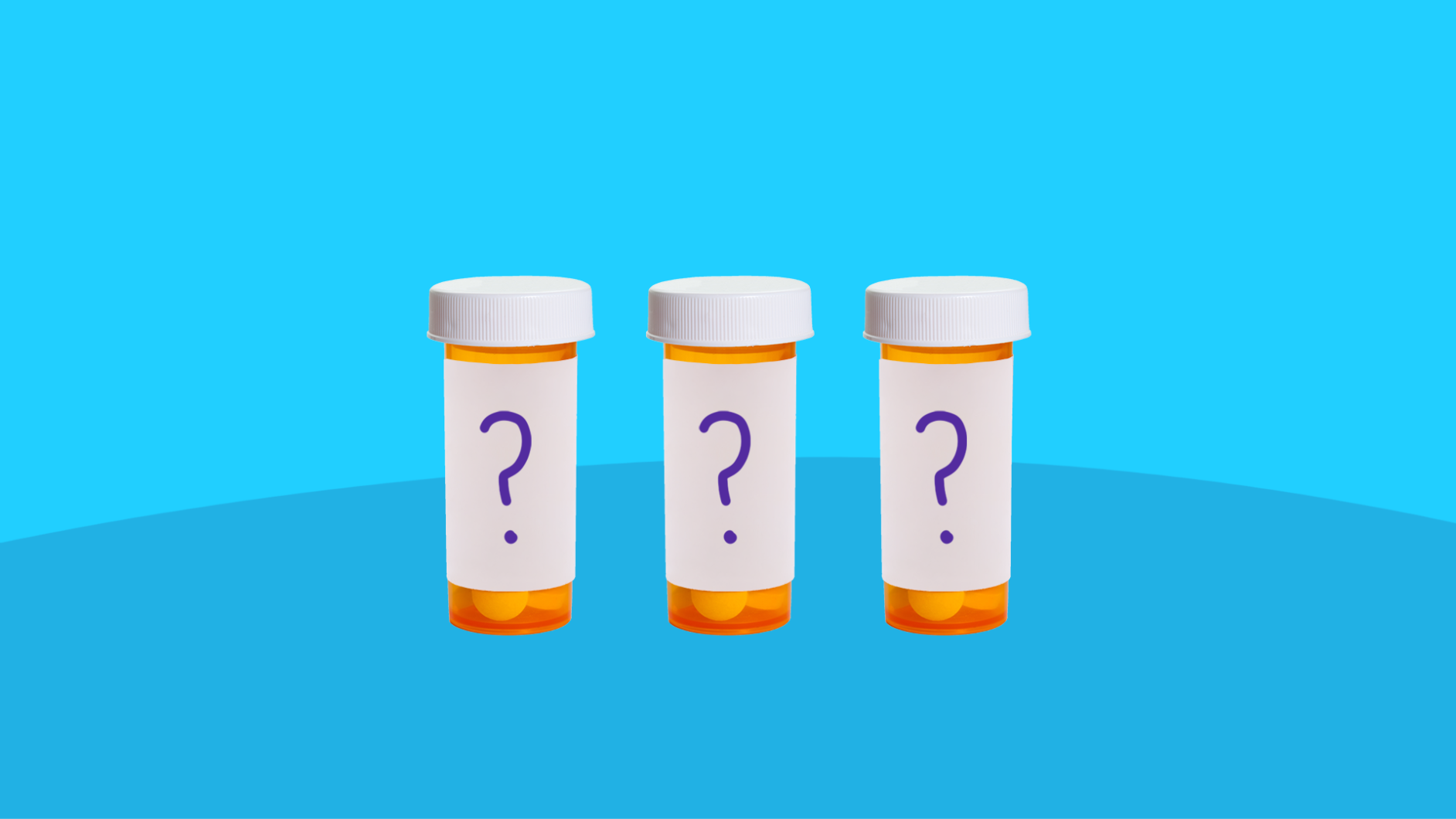Common cefdinir side effects | Diarrhea | Yeast infection | Serious side effects | Rash | C.Diff | Side effects in seniors | How long do side effects last? | Warnings | Interactions | How to avoid side effects
Cefdinir (brand name: Omnicef) is a third-generation cephalosporin antibiotic used to treat certain bacterial infections such as bronchitis, sinusitis, pharyngitis (sore throat), and urinary tract infections (UTIs). It works by killing harmful bacteria throughout the body. It comes in both capsule and oral suspension form and is usually taken for up to 10 days, depending on the type of infection being treated.
Common side effects include diarrhea, vomiting, and headache. Serious adverse reactions are less common and include severe allergic reactions, Steven-Johnson’s syndrome, and Clostridium difficile (C. difficile) infections. Drug interactions are also possible when taking cefdinir. Be sure to tell your healthcare provider if you have any medical conditions or are taking any medications before taking cefdinir.
RELATED: Learn more about cefdinir |Get cefdinir discounts
Common side effects of cefdinir
The most common side effects of cefdinir include:
- Diarrhea
- Yeast infection (candidiasis)
- Nausea and/or vomiting
- Headache
- Abdominal pain
- Inflammation of the vagina (vaginitis)
- Rash
- Indigestion/Flatulence
Some clinically significant laboratory changes that might be seen include:
- Increased white blood cells in urine
- Increased levels of protein in the urine (proteinuria)
- Microscopic amounts of blood in the urine (microhematuria)
- Increased blood sugar (glucose)
- High levels of eosinophils (eosinophilia), which are a special type of white blood cells
- Elevated liver enzymes i.e. alanine aminotransferase (ALT) or aspartate aminotransferase (AST)
Diarrhea
In the same adult clinical trial mentioned above, 15% of adults and adolescents experienced diarrhea.
The pediatric clinical trial showed 8% of children being treated with cefdinir experienced diarrhea and 0.8% experienced abdominal pain. The rates of diarrhea were highest in patients younger than 2 years old (17%).
If diarrhea is severe during treatment with cefdinir, consult your healthcare provider to rule out a C. difficile infection.
Yeast infection
Cefdinir destroys harmful bacteria in the body, but can also destroy the good bacteria. This may result in oral thrush and vaginal yeast infections during treatment with cefdinir.
A clinical trial of 5,093 adults and adolescents taking 600 mg of cefdinir per day found that 4% of women experienced a vaginal yeast infection during treatment. In the same group, there was a 0.2% occurrence of yeast infections unrelated to the vagina.
Another trial of 2,289 pediatric patients showed vaginal yeast infections in 0.3% of girls being treated with cefdinir and fungal skin infections in 0.9% of all children.
RELATED: How to prevent yeast infections from antibiotics
Serious side effects of cefdinir
Serious side effects while taking cefdinir are rare but possible. These side effects include:
- Severe allergic reaction (anaphylaxis)
- Stevens-Johnson syndrome: flu-like symptoms accompanied by painful rash and blisters
- Toxic epidermal necrolysis: a rare condition causing skin peeling and blistering
- Exfoliative dermatitis: redness and peeling of large areas of skin
- C. difficile infection causing severe diarrhea and colitis
- Low neutrophils (neutropenia)
- Low platelet count (thrombocytopenia)
- Hemolytic anemia
- Aplastic anemia
- A severe immune reaction (serum sickness)
- Renal toxicity
- Liver toxicity
Cefdinir rash
Several side effects of cefdinir may be accompanied by a rash, including an allergic reaction, Stevens-Johnson syndrome, toxic epidermal necrolysis, and exfoliative dermatitis.
Clinical trials reported rash at an incidence of 0.9% in adults and adolescents being treated with cefdinir. Rash occurred in 3% of children taking this medication, although the majority of these occurrences were in children younger than 2 years old.
Seek emergency medical attention right away if rash-like symptoms are accompanied by wheezing, tightness in the chest or throat, or trouble breathing. This could be a sign of a potentially dangerous allergic reaction.
Clostridium difficile-associated diarrhea
Treatment with Cefdinir can destroy some of the bacteria in the gut. This allows other organisms such as C. difficile to grow out of control. C. difficile produces toxins that may cause swelling/inflammation in the lining of the large intestine. This inflammation is called pseudomembranous colitis. This can cause diarrhea ranging in severity from mild diarrhea to fatal colitis. Symptoms include:
- Frequent watery diarrhea that is sometimes bloody
- Pain and tenderness in the stomach
- Cramping
- Nausea
- Fever
- Loss of appetite
RELATED: Antibiotics that cause C.Difficile
Cefdinir side effects in elderly
People with multiple comorbidities may have an increased risk of side effects when treated with antibiotics, and older adults have more underlying health conditions than younger patients. However, clinical trials found cefdinir to be a safe drug for older patients, with a lower adverse reaction rate compared to young adults.
How long do cefdinir side effects last?
Most cefdinir side effects will subside during or shortly after treatment, although some may require medical attention. Yeast infections, oral thrush, and C. difficile are some examples of side effects that may need to be treated with other medications.
Severe allergic reactions require immediate medical attention. Signs of a severe allergic reaction include:
- Rash or hives
- Swollen or blistered areas of skin
- Red, peeling skin
- Wheezing
- Chest tightness
- Swelling of the mouth, face, lips, throat, or tongue
- Difficulty breathing
Cefdinir contraindications and warnings
Cefdinir may not be appropriate for everyone. Discuss any medical conditions with your healthcare provider before starting treatment, especially if you have ever had:
- Kidney disease or a history of dialysis
- Allergies to other antibiotics, especially cephalosporins and penicillins
- Colitis
- Diabetes (oral suspension contains sucralose)
- Seizure disorders
Kidney disease
Use caution in patients with a creatinine clearance of <30mL/min. Dosage should be reduced in these patients with kidney problems. There is evidence that cephalosporin antibiotics may cause seizures in patients with renal impairment whose dosage was not reduced.
Colitis
Use caution in patients with a history of colitis. Clostridium difficile-associated diarrhea may be more severe in these patients if it occurs.
Diabetes
Cefdinir can increase blood sugar on its own. The liquid form of cefdinir also contains sugar, which may alter blood glucose levels. Diabetic patients should avoid using cefdinir suspension to ensure that blood sugar levels aren’t altered during treatment. Careful glucose monitoring is required when Cefdinir must be used.
Withdrawal
Cefdinir does not cause dependency or withdrawal symptoms. However, like all antibiotics, if a patient does not finish the full course of antibiotics, an infection may persist or recur.
Overdose
Overdose on any medication is possible, including cefdinir. Signs of overdose include:
- Nausea
- Vomiting
- Stomach pain
- Diarrhea
- Seizures
If an overdose is suspected, seek emergency medical attention or call the Poison Control Center immediately.
Children
Cefdinir is FDA-approved to treat certain bacterial infections in children as young as 2 months. It may treat bacterial ear infections (otitis media), sinusitis, pharyngitis, tonsillitis, pneumonia, and bacterial skin infections.
Pregnancy
According to the FDA, cefdinir is a pregnancy category B medication. There is no human data available to measure risk, but animal data shows no known risks or complications of taking cefdinir while pregnant. If you’re pregnant, be sure to talk to your healthcare provider about the risks before taking this medication.
Breastfeeding
Cefdinir may be taken while breastfeeding. There is no human data available to determine the risk to the infant, however, no risk is expected based on data from other cephalosporin antibiotics. It is not yet known if cefdinir affects breast milk production.
Cefdinir interactions
There are several drugs and supplements that may interact with cefdinir, according to the FDA. Be sure to tell your healthcare provider what medications, vitamins, and supplements you’re taking before beginning treatment.
- Antacids, magnesium, and iron supplements: Some antacids or supplements containing iron or magnesium may interfere with cefdinir absorption. Take 2 hours before or after Cefdinir. Patients taking iron may also experience a reddish stool discoloration (not related to bleeding). The reddish color is due to the formation of a complex between cefdinir and iron in the gut.
- Probenecid: Taking probenecid, a uric acid reducer that treats gout, may increase levels of cefdinir in the body.
- Hormonal contraceptives: Cefdinir may decrease the efficacy of hormonal birth control; use another form of birth control while taking cefdinir.
- Tetracyclines: Taking tetracyclines with cefdinir may alter the way cefdinir works inside the body.
How to avoid cefdinir side effects
Cefdinir may cause side effects, but there are ways to reduce the risk for these undesired effects. Some ways to avoid side effects while taking cefdinir include:
- Take cefdinir as directed. Follow the medical advice of your healthcare provider and instructions given by your pharmacist. Be sure to shake your liquid cefdinir before use and measure using an appropriate dosing syringe.
- Take cefdinir with or without food. You don’t have to take cefdinir with food, however, taking it with food may decrease stomach discomfort.
- Don’t skip doses. If you forget a dose of cefdinir, take the missed dose as soon as possible. If it’s almost time for your next dose, skip the missed dose. Never double up on doses, as this may cause unwanted side effects.
- Avoid antacids, magnesium, and iron supplements for at least two hours before and after taking cefdinir. Some antacids and supplements interfere with the absorption of cefdinir. Avoid taking antacids or supplements containing magnesium or iron within two hours of taking cefdinir to prevent these interactions.
- Tell your provider about all medical conditions. Cefdinir may not be the best medication for patients with certain medical conditions. Avoid taking cefdinir if you’ve had an allergic reaction to cephalosporin antibiotics in the past.
- Tell your provider what other medications you are taking. Drug interactions while taking cefdinir are possible. Tell your healthcare provider of any prescription drugs, over-the-counter medications, supplements, and herbal products before beginning treatment.
- Don’t stop taking cefdinir before you’ve finished treatment unless directed to do so by a healthcare professional. It’s important to finish your entire treatment, even if your symptoms improve. Discontinuing the medication early may cause repeat infection or antibiotic resistance.
- Store cefdinir properly. Keep this medication at room temperature away from moisture and heat and out of reach of children. Discard your unused cefdinir after treatment.
Resources
- Omnicef drug information, Federal Drug Administration (FDA)
- Cefdinir adverse reactions, Epocrates
- Cefdinir contraindications, Epocrates
- Cefdinir drug label info, DailyMed











